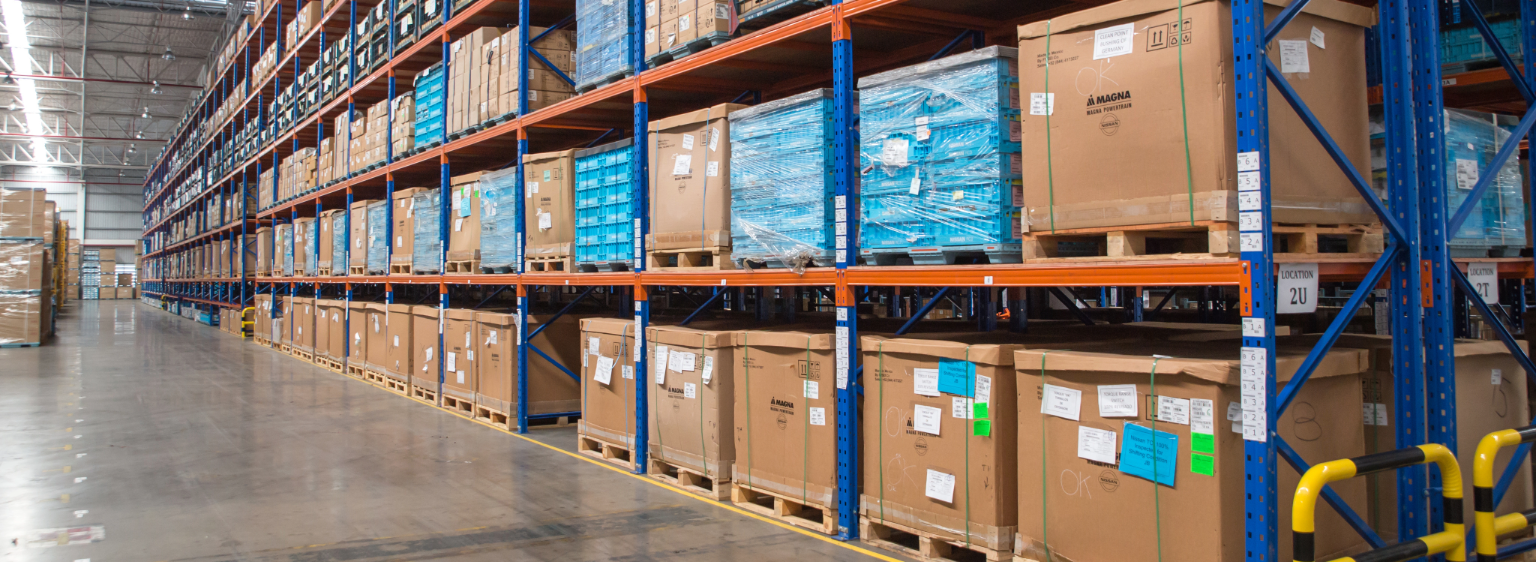As more organizations embrace a lean transformation and operation, distribution center management has to take a different approach than that traditionally taken by warehouse management.
Similar to other operational areas, executives and managers of distribution centers need to don the mantle of coaches and mentors to ensure the success of lean management.
In fact, making lean a success in the warehouse and in the supply chain requires the same kind of cultural shift and change in management attitudes and approaches as in other operational areas. For a successful lean transformation, distribution management needs to take the lead in creating a strong sense of ownership at the operational level, and then provide people on the warehouse floor with the need for change, strategy, structure, knowledge, methods, time, tools and support needed to make those initial transitional steps.
For distribution center managers, this cultural shift is significant. For example, in the traditional warehouse management role, the supervisor and operations manager typically spend an inordinate amount of time in the office. Only occasionally do they venture out on the floor to check on whether a problem had been fixed, or a parts storage issue straightened out.
But in the lean environment, given the importance of continuous flow, distribution center leaders need to take a different approach, spending much more time on the floor in the warehouse. They need to see what the problems are, provide support to the operation, and take action where needed to get operations back on pace.
Coach, Teacher, Mentor
The operating management’s role changes in another significant way. Their roles shift from being problem solvers to more that of coaches, teachers, and mentors to their team. Developing a path and providing operating management with the tools and capabilities to make a successful transition in their roles becomes the work of the distribution center manager, using the broader organizational resources that are available.
Above all, distribution center managers must shift their time from being problem-solvers towards becoming teachers, teaching those who are closest to the problems how to solve them. The distribution manager’s role, in turn, is to teach warehouse supervisors how to:
a) use the operating system to identify problems for continuous improvement;
b) employ standard problem-solving methods;
c) facilitate a team through a continuous improvement project; and engage them in identifying problems.
In order for distribution center managers to be successful as coaches and teachers, they must first learn the standard problem solving methodology, apply it themselves as a way of doing business and then teach their management. This in itself poses a transitional challenge, often due to a lack of organizational clarity of the distribution center manager’s new role requirements, or resistance by managers being required to apply standard problem solving methods themselves. Often times this could be associated to their discomfort with learning a new way of doing things and looking vulnerable or a discomfort with actually facilitating the training. Senior leadership will need to assist distribution center managers with the appropriate level of structure and support to help them become successful.
Of course, one of the most difficult things for management is finding the time to teach people and coach them in continuous improvement. If, as a distribution center manager, your time is largely taken up with solving problems, you’ll never find the time to invest in teaching all your people on the application of continuous improvement at the worksite. Developing a transitional plan to get to the new operating environment and stabilizing it is a key responsibility of the distribution manager. Many distribution managers gain organizational assistance here by having an additional temporary local resource whose role is to help them with leveling up personnel in the facility, implementing continuous improvement activities, stabilizing the knowledge and application of the standardized problem solving methodology in the operation, and normalizing continuous improvement as a way we do our work.
Not My Silo
Unlike the “siloed” view of a distribution center manager in a traditional environment, lean requires you to take a broader view, looking across supply chains for areas that need improvement.
This means looking across and collaborating with other silos that are either suppliers or customers of the distribution center: transportation companies, purchasing, inventory control, suppliers, and customers. Instead of saying, “That’s not my job,” the distribution center manger should foster an attitude that everyone is charged with the responsibility to look across the supply chain to make improvements. This can sometimes be a large cultural barrier if other parts of the organization are not operating with the same understanding and providing the same direction to their people.
From an executive’s view, one of the broader goals here is to pragmatically drive cross-functional problem solving until it becomes the way in which we do business. Another big cultural shift for operational management is becoming a planner versus a reactor. Distribution management has to adopt a new attitude of spending more time planning and less time reacting to problems in the warehouse. This means that the first step in planning is Knowing Your Business at a much deeper level than previously required. (See Dave Graham’s related article Think You Know Your Warehouse or Distribution Center? Think Again.)
In addition to KYB and applying that to workload planning, you must develop an annual Continuous Improvement Plan to determine the priority, sequence, and number of functional area continuous improvement projects needed to be successful in the upcoming year. This in turn helps to feed the operational workload plans. The improvement plan typically is done during the annual planning and budget cycle.
The plan is developed based on business priorities and targets, problems surfaced through a lean assessment, done by cross-functional teams of people representing suppliers of work, those doing the work and internal or external customers (e.g. a loading, consolidation, and trucking assessment team).
Worst Fear
So how can senior leaders enable the organization’s transition to this new way of thinking? One way is to ensure that management is no longer worried about failing. In the traditional distribution center, management’s worst fear is failure. But in a lean operation, management needs to believe that it’s more important to fail fast: understand the current state, identify the root cause, experiment, and learn.
In a lean environment, people are encouraged to talk about what isn’t working. So, a manager telling a senior leader about all the improvements in the warehouse should also be able to talk about problems. Managers need to understand that it’s okay to say that things are not going 100% perfectly and that these are the areas where we can improve.
Imagine all the great opportunities for improvement that managers hide for fear of being criticized. Senior leaders and distribution center managers can help others make this transition by demonstrating behaviors that makes it safe to surface problems.
Admittedly, these are some pretty big mental and cultural shifts that require a significant change in how a company and their distribution center management see their roles in the organization. We must engage more with people across the supply chain to improve processes. And we must make time to coach, teach, and mentor people and drive them to be responsible and accountable for pursuing continuous improvement projects that improve processes at their levels in the operation.
Each supervisory role should be responsible for developing people in problem solving and making time available for problem solving. Ultimately, that’s how an organization brings about a shift in the culture. All this becomes a part of senior leadership’s responsibility.
Often we see operations that exhibit a sense of pride based on their size and the diversity of work performed. In traditional environments this facilitated how departments and people saw themselves in the organization. This is something that some managers will be challenged with dismantling because it gets in the way of change.
In the traditional distribution center, management’s worst fear is failure. But in a lean operation, management needs to believe that it’s more important to fail fast: understand the current state, identify the root cause, experiment, and learn.
In one warehouse where I worked, people who reported to me said how complicated the business was compared to all the other operations in the network. Because of that complexity, they believed lean management wouldn’t work.
Of course the paradigm for this operation had been formed many years ago and accepted as being true. As a result, I had to begin dismantling the myth about complexity. I helped them understand the business more deeply in order to demystify what was previously understood and accepted to be complex. Soon the team came to know that using the word “complex” wasn’t going to get an audience.
Burn the Bridge
Another proven approach I found for pushing cultural change deep into the organization was holding an annual event to showcase what the distribution centers had achieved through continuous improvement in their operations. This often has multiple effects—it reinforces the importance and power of sharing knowledge across the company, it recognizes people who are driving to the new way of doing business, and it helps push those that are a little more passive aggressive.
Hold multiple events, such as one for warehouse supervisors, one for distribution centers, and one for the supply chain. Nonetheless, in any organization you will have some people who either leave or are let go because they resisted the change. In these cases we must first be able answer the question “Did I do everything I could to help this person transition to the new way of doing business?”
Resistance runs deep, and it can come from any level of the organization. I had a facility manager — someone who was actually in charge of making lean work in his operation — who wanted me to change the numbers to show that lean didn’t work.
I like to use a bridge analogy to illustrate how to make the transition to the new lean culture and roles. The idea is to push your people and the organization across that bridge as quickly as possible to get to the new way of thinking and doing the work. Then burn the bridge, so there is no way of going back. There are going to be transition challenges. Your goal is to pass through those challenges as quickly as possible.
Suggested Next Steps for Supply Chain Professionals …
- Dig Deeper: The biggest difference between lean in manufacturing and distribution is that manufacturing uses single-piece flow, while lean distribution uses small batch processing. Read this Q&A with Dave to learn more.
- Dig Even Deeper: Learn how to begin implementing lean principles in a warehouse at the two-day, in-depth workshop Lean Warehousing and Distribution Operations. The workshop combines lecture, group discussion, group exercises, and a highly interactive simulation (at right) to reveal the key steps for implementing lean principles in a traditional distribution operation. Read the agenda and enroll.
Lean Warehousing and Distribution Operations
Improve a distribution center's efficiency, quality, safety, and space utilization.






